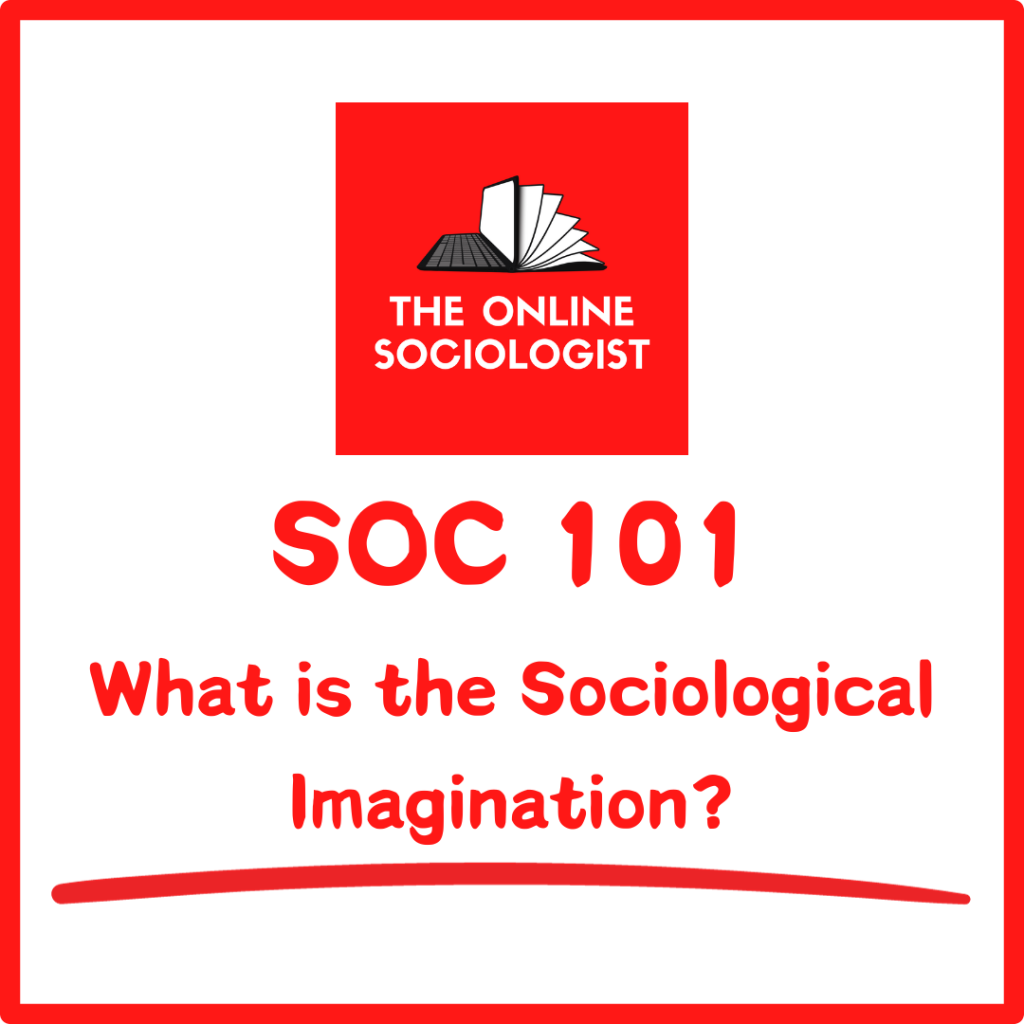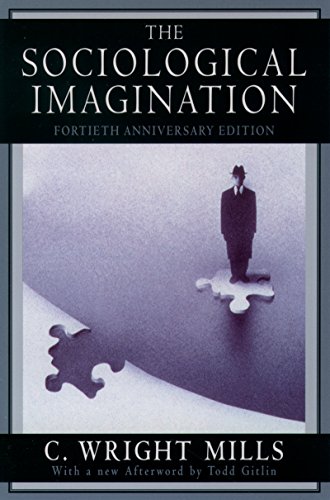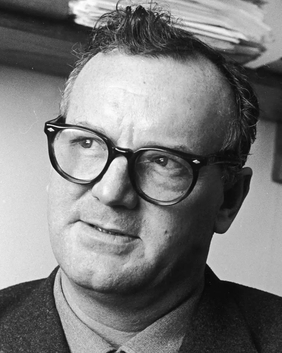
The sociological imagination is a powerful tool that helps us connect our individual experiences to the wider society. This concept, first introduced by C. Wright Mills, allows us to see the link between our personal lives and the larger social forces that shape them. In this reading, we will explore various definitions of the sociological imagination, delve into its key components as outlined by Mills, and examine practical examples to illustrate this concept in action.
Defining the Sociological Imagination:

In the 1959 book, The Sociological Imagination, C. Wright Mills defined the sociological imagination as the ability to see the intricate connections between individual experiences and the broader patterns of society. He described it as the “vivid awareness of the relationship between experience and the wider society.” This concept encourages an understanding that personal troubles are often rooted in public issues, highlighting the interplay between ‘biography’ and ‘history’. Mills’s definition emphasizes the importance of recognizing how individual lives are not only shaped by personal choices but are also deeply influenced by historical events and societal structures. He argued that to truly understand one’s own experience, one must place it within the larger context of history and society. The sociological imagination, therefore, is a perspective that enables us to grasp the complex interaction between personal experiences, societal norms, and historical forces, bridging the gap between the personal and the societal.
Key Concepts from C. Wright Mills’s The Sociological Imagination:

- Troubles vs. Issues: Mills makes a pivotal distinction between personal troubles and public issues. He states, “Troubles occur within the character of the individual and within the range of his immediate relations with others; they have to do with his self and with those limited areas of social life of which he is directly and personally aware.” In contrast, “issues have to do with matters that transcend these local environments of the individual and the range of his inner life” (Mills, The Sociological Imagination). This distinction helps us understand how personal challenges, like unemployment, are often indicative of broader societal issues, like economic downturns.
- History and Biography: One of the central themes in Mills’s work is the relationship between history and biography. He eloquently asserts, “The sociological imagination enables us to grasp history and biography and the relations between the two within society. That is its task and its promise.” This quote underscores the importance of understanding how individual experiences (biography) are shaped within the larger scope of societal and historical forces (history).
- Power and Social Stratification: Mills delved deeply into the dynamics of power within society, particularly focusing on how power and wealth are distributed. He observed, “The power elite are those political, economic, and military circles which as an intricate set of overlapping cliques share decisions having at least national consequences.” This perspective encourages an examination of societal hierarchies and power structures and how they influence individual lives.
- The Role of Imagination: Mills emphasized the role of imagination in sociology, stating, “The sociological imagination enables its possessor to understand the larger historical scene in terms of its meaning for the inner life and the external career of a variety of individuals.” This highlights the importance of creativity and critical thinking in linking personal experiences with broader social patterns.
Practically Applying the Sociological Imagination: Three Examples
- Ariana’s Online Education Decision: Ariana is a college student who, after a gap year working at a local supermarket, decides to pursue her education through online courses. At first glance, her choice might seem to be driven by personal preferences, such as the need for a flexible schedule to maintain a work-life balance, and the appeal of self-paced learning. However, applying the sociological imagination reveals that her decision is also influenced by broader societal factors. The advent and growth of digital technology have made online learning more accessible and practical, reflecting changes in educational delivery methods. This trend is further propelled by economic factors, such as increasing tuition costs and the necessity for many students to work while studying. Moreover, societal shifts towards valuing higher education and the pressures of a competitive job market have made alternative education paths, like online courses, more prevalent and acceptable. Ariana’s choice to take online classes is thus not merely a personal decision but one that is intertwined with significant societal developments in education, technology, and the economy.
- Jamal’s Urban Living Decision: Consider Jamal, a recent graduate who opts to live in an urban area close to his workplace. His decision may appear to be a personal lifestyle choice, aimed at enjoying the conveniences and amenities of city life. However, examining this choice through the lens of the sociological imagination reveals a connection to larger urbanization trends, economic factors, and social changes. The concentration of job opportunities in urban areas, coupled with the societal allure of urban lifestyles, drives many young professionals like Jamal to cities. Additionally, factors like the rise in housing prices and the gentrification of urban neighborhoods play a significant role in shaping where and how people like Jamal choose to live. This example illustrates how individual residential choices are influenced by broader economic, social, and urban planning trends.
- Li’s Participation in Community Yoga: Li, a senior citizen who attends community yoga classes, provides another insightful example. On a personal level, Li’s participation could be seen as a means to maintain health and enjoy social interaction. However, from a sociological perspective, this choice is reflective of societal shifts in attitudes towards aging and health. There’s an increasing societal focus on active aging and health maintenance among the elderly, influenced by public health policies and a growing awareness of the benefits of physical activity for seniors. Community programs targeting senior citizens, like the one Li attends, are not just random occurrences but are part of broader societal efforts to improve senior citizen well-being. Li’s engagement in yoga, therefore, connects to wider social initiatives and cultural shifts regarding aging and health.
Structure, Agency, and the Sociological Imagination:
“Men make their own history, but they do not make it as they please; they do not make it under self-selected circumstances, but under circumstances existing already, given and transmitted from the past.”
Karl Marx, The Eighteenth Brumaire of Louis Bonaparte (1852)
This quote by the nineteenth-century economist and philosopher, Karl Marx, works to capture not only the tension between history and biography laid out by C. Wright Mills in The Sociological Imagination but also the interplay of structure and agency. Structure refers to the complex set of social forces, relationships, institutions, and norms that shape and constrain individual behaviors and choices. Agency, on the other hand, represents the capacity of individuals to act independently and make their own free choices. The sociological imagination allows us to see how our personal decisions and experiences are not merely the result of individual autonomy but are also deeply influenced by the societal structures within which we live. It highlights how personal agency is exercised within the constraints and opportunities provided by social structures.
By examining the relationship between structure and agency, students of sociology can better appreciate the complexities of social life. This perspective encourages a deeper exploration of how societal norms, economic conditions, historical events, and cultural backgrounds influence personal choices and opportunities. Understanding this dynamic is essential for a full appreciation of the sociological imagination, as it reveals the nuanced ways in which our private lives are intertwined with the larger social world.
Conclusion: The Sociological Imagination
In summary, the sociological imagination is a vital conceptual tool in understanding the intricate tapestry of individual experiences within the broader societal context. It bridges the personal and the public, illuminating how our private lives are inextricably linked to larger social forces and historical events. Through exploring the interplay of structure and agency, as well as the insightful distinctions between personal troubles and public issues, we gain a deeper awareness of the dynamic between individual autonomy and societal constraints. The sociological imagination, as articulated by C. Wright Mills and expanded upon through various perspectives, empowers us to perceive beyond the immediacy of our personal experiences. It encourages us to recognize the complex and often subtle influences of societal structures on our choices, behaviors, and opportunities. Ultimately, the sociological imagination is not just a theoretical concept but a practical lens through which we can more fully understand ourselves and the world around us, fostering a greater appreciation of the richness and complexity of social life.
